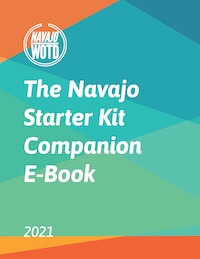dih-lth
The Navajo word dił refers blood.
In earlier Navajo society, blood was not the basis for determining one’s relations among the Diné — that was the purpose of clans. Today, the Navajo tribe issues Certificates of Indian Blood that measure blood quantum of enrolled tribal members. Naturally, Navajo families are beginning to rely more upon blood relations than clan relations.
Besides the literal aspect of dił, there are some implied meanings in ceremonial usage. Dił, being red, is often grouped together with black (if you can recall, the fire god is also called “the Black God” when translated to English). There is also the name for the traditional Navajo First World that is known as Red world. It is symbolic in many cases of both fertility and of destruction, and the cycle as a whole.
There is also the the traditional Navajo story of a group of animals that asked woodpecker to kill the owl. It is said that the animals that wear red on their coats, like the reddish-colored bellies of some squirrels, were part of that group, the red being the blood of the owl.
A modern understanding and examination of blood and genetic diversity has led to the discovery among Navajo people of a rare hereditary condition known as xeroderma pigmentosum. This condition is significantly more common among Navajo than the wider population (about 1 in 30,000 vs. 1 in 250,000).
As you may now see, dił is one of many Navajo words that are evolving to encompass a contemporary meaning. Although direct translations are becoming common practice, the underlying implied meanings of Navajo – and for that matter any indigenous – words can be lost in translation.
Without a broader understanding of dił, it would be hard for one to tell why dił is part of the word for the stars and the rest of the universe – yádiłhił.
